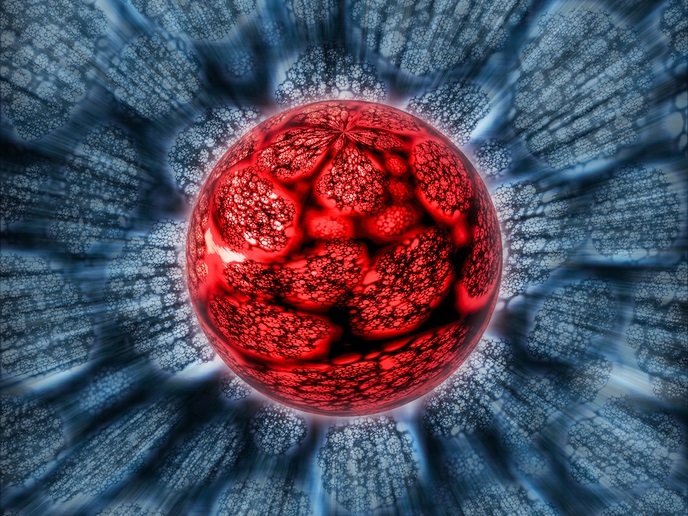Nanoparticle-based treatment for brain tumours
GBM is a fast-growing glioma that develops from astrocytes and oligodendrocytes, cells responsible for supporting nerve cells within the brain. It accounts for half of all primary brain tumours(opens in new window) and is characterised by an increased migration of malignant cells to the adjacent brain tissue. Increasing evidence suggests that GBMs harbour tumour-initiating cells resistant to radiation and current standard chemotherapy. This explains the highly variable response of this cancer type to available treatments.
A multipotent theragnostic strategy against GBM
Undertaken with the support of the Marie Skłodowska-Curie (MSC) programme, the GLIOMA(opens in new window) project developed a novel combinatorial strategy that could potentially repress tumour immune-evasion, and specifically target GBM cancer cells. The GLIOMA theragnostic formulation (TNVax) consists of nanoparticles that carry the cytotoxic agent 5-fluorouracil (5FU) and are functionalised with a targeting antibody and a therapeutic antibody. “Our penta-module design provides both immune- and chemotherapy, enhancing the overall anti-cancer effect,” outlines the MSC fellow Sreejith Raveendran. Hollow gold nanocages are coated on the outside with a bacterial polysaccharide bound with 5FU.The targeting antibody recognises the GBM cell-specific antigen CD133 and facilitates strong binding of the TNVax to GBM cells. The immune antibody will target the programmed death-ligand 1 PD-L1(opens in new window) which is overexpressed in GBM and has a known role in suppressing adaptive immunity during pregnancy and autoimmune disease. PD-L1 works by binding to the PD-1 molecule and transmitting an inhibitory signal that reduces the proliferation of antigen-specific T-cells and supports the survival of suppressive regulatory T cells. Although yet to be determined, the anti-PD-L1 antibody in TNVax inhibits the associated immune suppression against GBM and is thought to enhance the overall anti-tumour immunity. Furthermore, the gold nanoparticles are capable of absorbing light of specific wavelength and releasing it as heat to kill cancer cells through a process known as photothermal ablation.
Vaccine optimisation and future prospects
Researchers performed detailed characterisation of the TNVax nanoparticles using various physical, chemical and biological methods. The in vitro cytotoxic potential of these nanoparticles was validated against GBM cell line. Scientists have also completed pharmacokinetic studies in a mouse model and ongoing work will determine the in vivo anti-cancer efficacy and immunomodulatory effects of the TNVax nanoparticles. Considering that gold nanoparticles can be used as contrasting agents in computed tomography, TNVax simultaneously offers the potential to image the brain. Further nanoparticle modification can deliver other imaging contrast agents for diagnostic and monitoring purposes. Although far from its clinical translation, the GLIOMA theragnostic strategy has the potential to revolutionise anti-cancer treatment by combining different killing strategies. Its penta-module nanoformulation can be further used as a model for the future development of vaccines against other types of cancer. “Administration of combinatorial therapies that include chemotherapeutic agents and immunogens is the way forward for cancer treatment; not only do you kill cancer cells, but you also establish durable immunological memory to prevent tumour recurrence,” emphasises project coordinator Irina Savina. Importantly, nanoparticles with a diameter smaller than 100 nm have an increased possibility of crossing the blood brain barrier and reaching the tumour, helping to tackle GBM.







